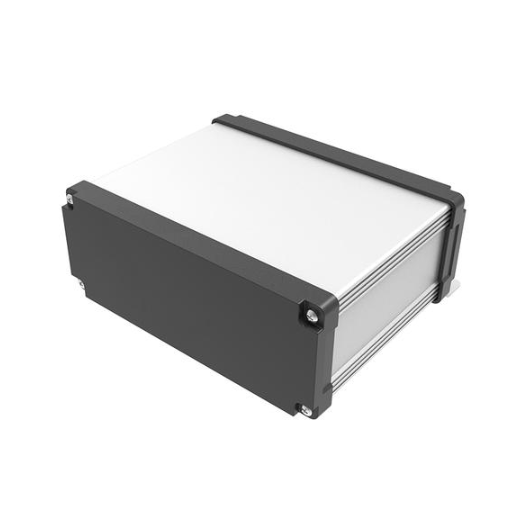In an age where our gadgets are omnipresent, protecting them from the elements is paramount. Enter waterproof enclosures – the unsung heroes shielding our devices from water, dust, and other environmental hazards.
Whether you're an outdoor enthusiast, a tech aficionado, or an industrial professional, understanding the nuances of waterproof enclosures is crucial to safeguarding your valuable equipment.
Whether you're an outdoor enthusiast, a tech aficionado, or an industrial professional, understanding the nuances of waterproof enclosures is crucial to safeguarding your valuable equipment.
What are Waterproof Enclosures?
Waterproof enclosures are protective casings designed to shield electronic components, devices, or equipment from moisture, water, dust, and other environmental elements. These enclosures are crafted from materials that create a sealed or watertight barrier around the contents they safeguard.
What are the components Components of Waterproof Enclosures?
Key components of waterproof enclosures include:
●Construction Materials: They are often made from materials like plastic, fiberglass, aluminum, stainless steel, or specialized polymers that possess waterproof or water-resistant properties.
●Sealing Mechanisms: These enclosures feature various sealing mechanisms such as gaskets, o-rings, seals, or molded edges to create a tight seal, preventing water or moisture ingress.
●Protection Standards: Manufacturers adhere to international protection standards (like IP ratings) to denote the enclosure's level of protection against water, dust, and solid objects. For instance, an IP67 rating signifies complete protection against dust and immersion in water up to a certain depth and time duration.
●Customization Options: Waterproof enclosures come in various sizes, shapes, and designs, allowing customization to fit specific devices or equipment. They may also include features like transparent windows, vents for pressure equalization, or mounting options.
●Application-Specific Designs: Enclosures vary in design based on their intended application. Some are tailored for outdoor use, while others cater to industrial settings, healthcare, marine environments, automotive electronics, and more.
●Construction Materials: They are often made from materials like plastic, fiberglass, aluminum, stainless steel, or specialized polymers that possess waterproof or water-resistant properties.
●Sealing Mechanisms: These enclosures feature various sealing mechanisms such as gaskets, o-rings, seals, or molded edges to create a tight seal, preventing water or moisture ingress.
●Protection Standards: Manufacturers adhere to international protection standards (like IP ratings) to denote the enclosure's level of protection against water, dust, and solid objects. For instance, an IP67 rating signifies complete protection against dust and immersion in water up to a certain depth and time duration.
●Customization Options: Waterproof enclosures come in various sizes, shapes, and designs, allowing customization to fit specific devices or equipment. They may also include features like transparent windows, vents for pressure equalization, or mounting options.
●Application-Specific Designs: Enclosures vary in design based on their intended application. Some are tailored for outdoor use, while others cater to industrial settings, healthcare, marine environments, automotive electronics, and more.

What are the Applications of Waterproof Enclosures?
These protective casings shield sensitive equipment, electronics, and valuable assets from moisture, dust, and other environmental factors. Their applications span a wide spectrum, demonstrating their indispensability in ensuring the longevity and functionality of diverse devices.
1. Electronics and Technology
In the realm of electronics, waterproof enclosures serve as guardians for sensitive circuitry, preventing water ingress that could cause short circuits or corrosion. Devices like smartphones, cameras, and wearables employ waterproof casings to ensure durability, allowing them to withstand accidental spills, rain, or even submersion in water. Additionally, industrial equipment, control panels, and outdoor electronic displays rely on these enclosures to function reliably despite challenging environmental conditions.
2. Outdoor and Recreational Equipment
From outdoor lighting fixtures and speakers to GPS devices and marine equipment, waterproof enclosures are integral to the design of these products. They enable devices to endure exposure to rain, snow, humidity, or immersion in water, making them suitable for outdoor and marine environments. This extends to sports and recreational gear, including waterproof cases for cameras, ensuring they stay operational during extreme adventures.
3. Healthcare and Scientific Instruments
In medical and scientific settings, precision instruments and devices are safeguarded by waterproof enclosures. These casings protect sensitive equipment such as laboratory analyzers, diagnostic tools, and even implants from moisture and contaminants. They contribute significantly to maintaining accuracy and reliability in critical healthcare and research operations.
4. Industrial and Manufacturing
Industries such as manufacturing, mining, and oil and gas heavily rely on waterproof enclosures to shield control panels, sensors, and machinery from harsh conditions. Dust, moisture, and chemical exposure can significantly impair equipment functionality, making these enclosures vital for uninterrupted operations and worker safety.
5. Automotive and Transportation
In the automotive sector, waterproof enclosures are essential for protecting vehicle electronics, sensors, and control modules from moisture and debris. They ensure the reliability of essential systems, including engine control units, navigation systems, and entertainment consoles, enhancing overall vehicle performance and longevity.
Conclusion
Waterproof enclosures are the unsung guardians of our devices, ensuring they operate reliably in challenging environments. Understanding their intricacies, from materials and IP ratings to installation and maintenance, empowers users to make informed choices and protect their valuable equipment effectively.
Investing in the right waterproof enclosure is not just a precaution; it's a guarantee that your devices remain operational, regardless of the elements they face.
Investing in the right waterproof enclosure is not just a precaution; it's a guarantee that your devices remain operational, regardless of the elements they face.



